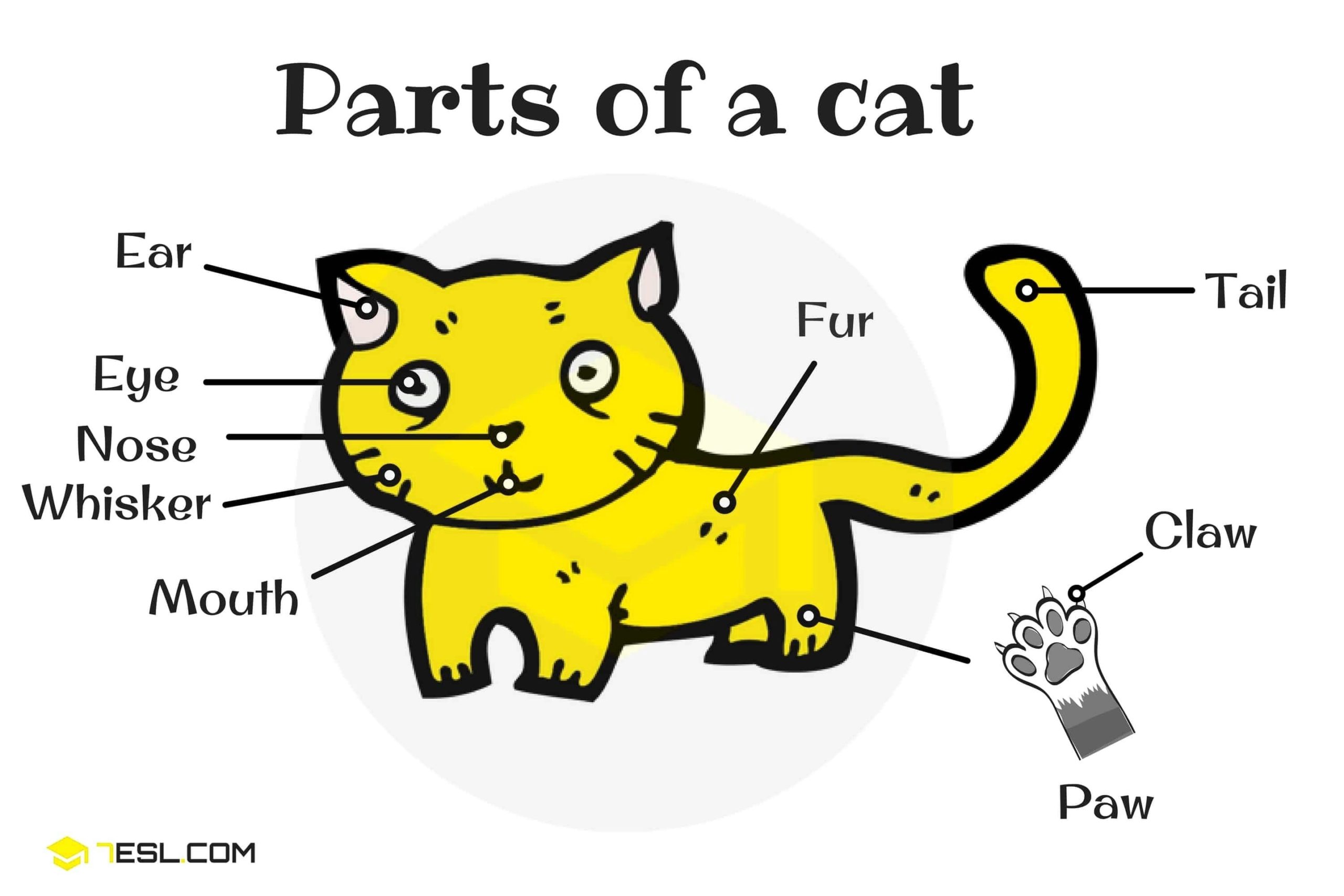
A cat’s anatomy is quite fascinating and complex. The visible parts of a domestic cat’s body are similar to those of other members of the genus Felis . Here are some of the key parts of a cat:
– Mouth: A cat’s tongue has sharp spines or papillae. There are five types of papillae that can be found in the dorsal aspect of the tongue: filiform, fungiform, foliate, vallate, and conical. Cats are carnivores that have highly specialized teeth. There are four types of permanent dentition teeth that structure the mouth: twelve incisors, four canines, ten premolars, and four molars. The premolar and first molar are located on each side of the mouth that together are called the carnassial pair. The carnassial pair specialize in cutting food and are parallel to the jaw. The incisors located in the front section of the lower and upper mouth are small, narrow, and have a single root. They are used for grasping and biting food. A cat also has a deciduous dentition prior to the formation of the permanent one. This dentition emerges seven days after birth and it is composed of 26 teeth with slight differences. The mouth will have smaller incisors, slender and strongly curved upper canines, vertical lower canines, and even smaller upper and lower molars .
– Ears: A cat’s ear, which has special fur for sensing and protection, is sensitive and can move independently of each other. Because of this mobility, a cat can move its body in one direction and point its ears in another direction. The rostral, caudal, dorsal, and ventral auricular muscle groups of each ear comprise fifteen muscles that are responsible for this ability. Most cats have straight ears pointing upward. Unlike with dogs, flap-eared breeds are extremely rare (Scottish Folds have one such exceptional mutation). When angry or frightened, a cat will lay back its ears to accompany the growling or hissing sounds it makes. Cats also turn their ears back when they are playing or to listen to a sound coming from behind them. The fold of skin forming a pouch on the lower posterior part of the ear, known as Henry’s pocket, is usually prominent in a cat’s ear .
– Eyes: A cat’s eyes are large and round, with pupils that can dilate and contract quickly. They have a tapetum lucidum, which is a reflective layer behind the retina that reflects light back through the retina, increasing the amount of light available to the photoreceptors. This allows cats to see better in low light conditions. Cats have a third eyelid, called the nictitating membrane, which is a thin, translucent membrane that moves across the eye from the inner corner to the outer corner. It helps to protect the eye and keep it moist. Cats also have a well-developed sense of smell and taste, with a vomeronasal organ that allows them to use their tongue as scent tasters .
– Skeleton: A cat’s skeleton is composed of 244 bones, which include the skull, spine, ribcage, and limbs. The skull of a cat has 29 bones, which protect the brain, eyes, and ears. The spine of a cat consists of 7 cervical vertebrae, 13 thoracic vertebrae, 7 lumbar vertebrae, 3 sacral vertebrae, and a variable number of caudal vertebrae. The cervical or neck bones are 7 in number. The dorsal or thoracic bones are 13 in number, each bearing a rib.
